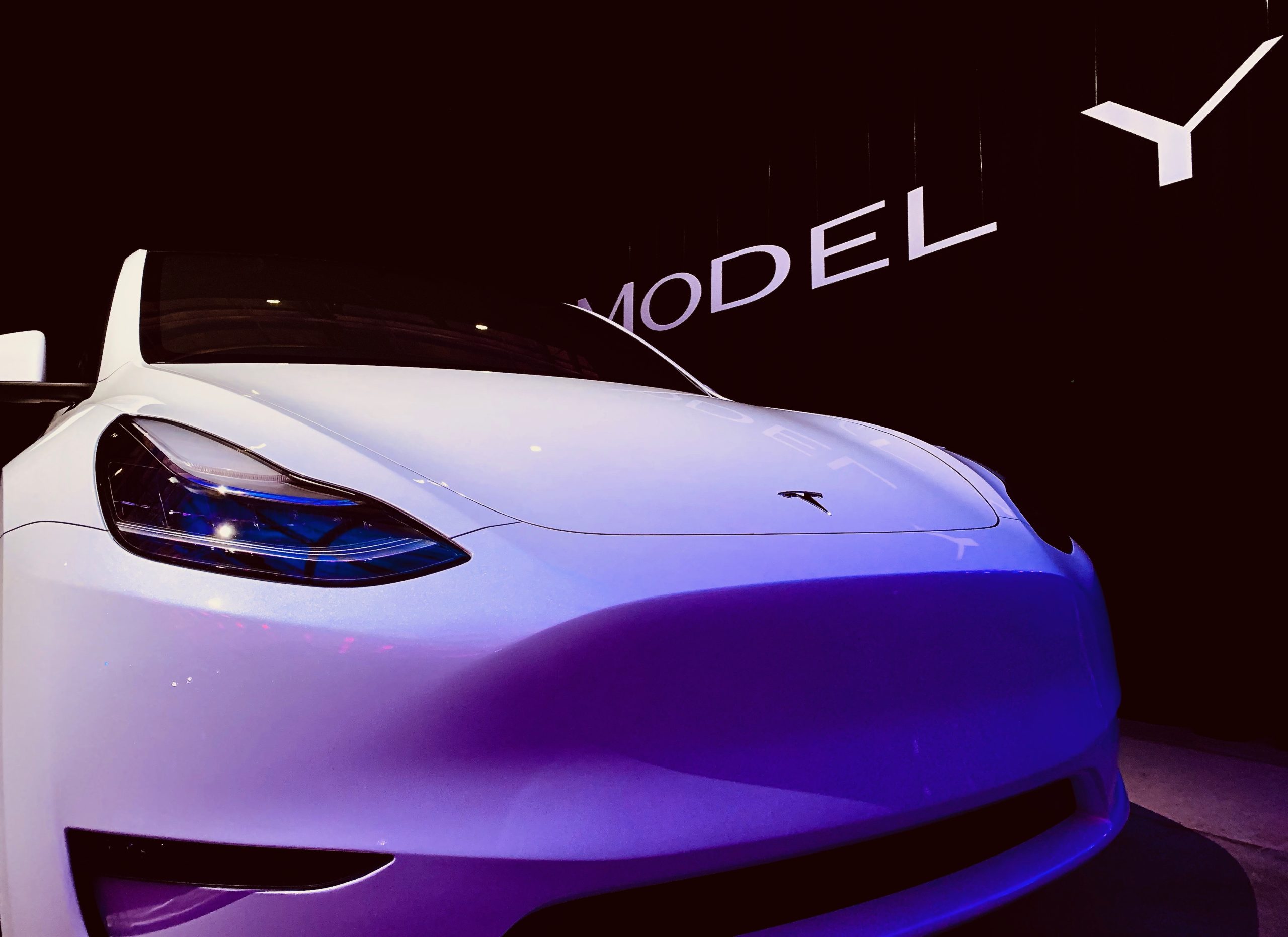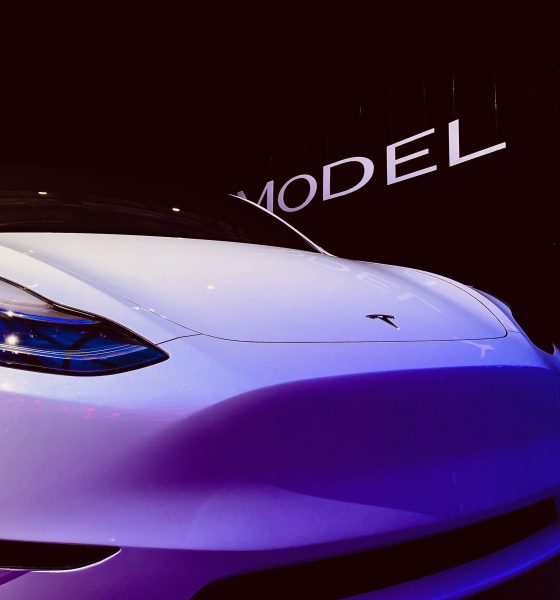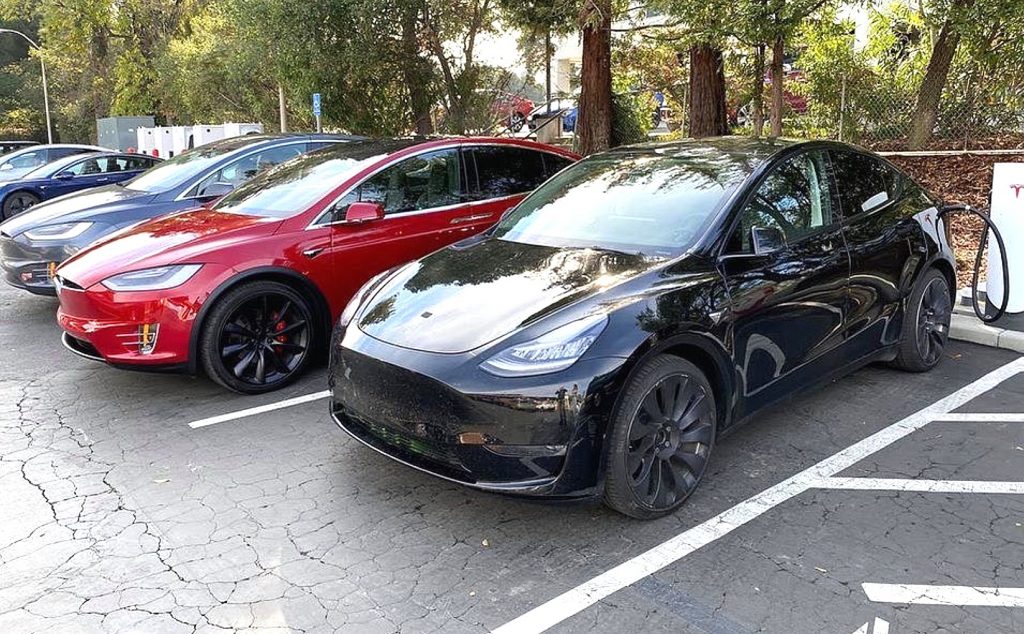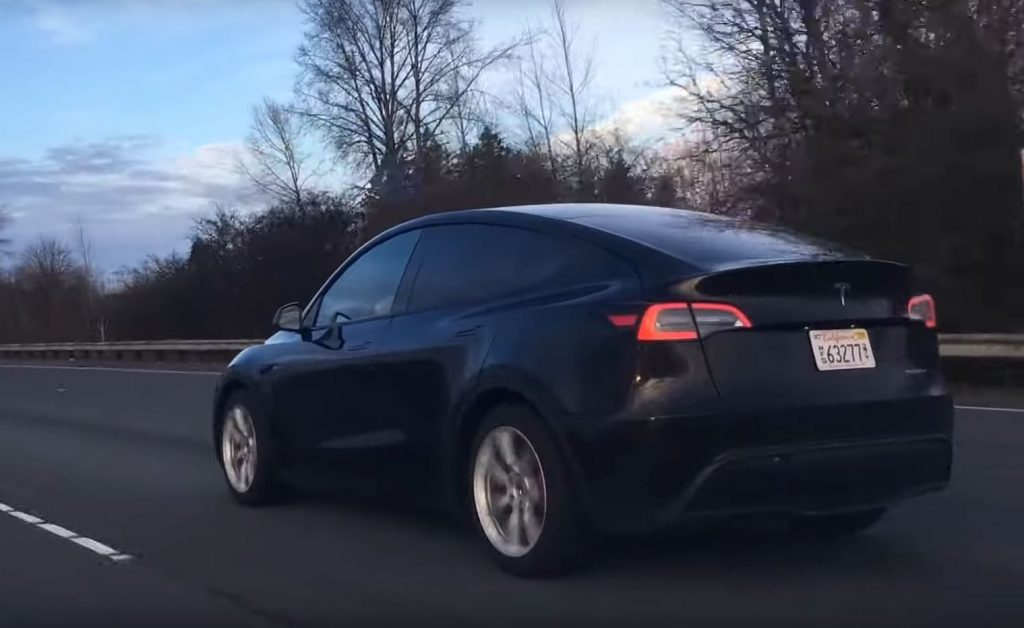

Investor's Corner
Why a Tesla Model Y update during the Q4 earnings call will set TSLA on fire
Tesla is set to report its Q4 2019 earnings after the bell rings to close trading on Wednesday and if the electric car manufacturer announces during the call that Model Y delivery will begin soon, expect TSLA stock to skyrocket.
A stellar Q3 2019 performance helped Tesla stock gain momentum and set up Elon Musk’s electric car brand for its final push in the last few months of 2019. Analysts are optimistic following its historic fourth quarter, when it was able to deliver 112,000 vehicles and produce more than 104,000 units. This helped TSLA rise to a $100 billion valuation, bumping German auto giant Volkswagen on the second spot in the list of the most valuable carmakers in the globe.
UPDATED: Tesla $TSLA shares soar following confirmation of Model Y first deliveries and breakout Q4 2019 results
As for the much-awaited all-electric crossover, the production schedule of the Tesla Model Y has moved up from Fall 2020 to Summer 2020 but all signs hint that it may even come sooner. From several sightings of production-ready Model Y units, the publication of its CARB certification, VINs registration with the NHTSA, and phone calls to future Model Y owners, rumors that the first deliveries of the Model Y will begin in February are highly-likely true.
If the Tesla Model Y premium electric crossover indeed hits the road next month, expect movement in the price of TSLA stock. And the only direction to look is up.
Early delivery of Model Y should scare competitors
Tesla has struggled before in keeping its promises of delivering vehicles to customers on time. Skeptics had a point because every carmaker must do its best to meet the demand and keep their customers happy. Elon Musk and his team fine-tuned kinks in production and proved to critics that they’re taking steps in the right direction as Tesla delivered 367,000 vehicles in 2019 — that’s a 50% jump from its numbers in 2018.
Deliveries of vehicles is an accurate barometer of how Tesla is starting to walk the walk, a clear sign that there’s an improvement in the company’s fundamentals as a whole. Initial production of the vehicle is being handled by Tesla’s Fremont plant in California but the company has also started its Model Y program in China. Giga Berlin will contribute to its production as soon as July 2021, with the facility set to start its operations with the production of the all-electric crossover as well.

The early delivery of the Model Y to consumers also means that Tesla has underpromised and over-delivered. This is a screaming signal that competitors should worry cause whatever “advanced manufacturing technologies” Elon Musk mentioned when he recently spoke about the Model Y could work wonders for the carmaker. These innovations may be related to a casting machine that can practically cast most of the vehicle’s body in one piece, rigid wiring system, and other technologies that the market will learn about soon.
“Model Y will also have some advanced manufacturing technology that we will reveal in the future. I think it will be exciting to show the kind of manufacturing technology associated with the Model Y and it will be exciting to learn about these technologies,” Musk said.
If these manufacturing technologies take Tesla a step closer to perfecting its production line design, then it can hit its production goals in Fremont, Shanghai, and Berlin in the near future. Of course, this efficiency in Model Y production will have a chain effect across its factories and product lines. Better production means a smaller gap between supply and demand. With better efficiency, trust in the brand can soar and sales go boom.
Tesla Model Y will be king of SUV/Crossover Segment
The Tesla Model Y electric crossover that has a range of 300 miles and an impressive 0 to 60 mph time of 3.5 seconds for its quickest variant is positioned perfectly.
Demand for sedans in the United States has been going down fast in favor of more spacious and more functional rides such as SUVs and crossovers. There were 17 million vehicles sold in the US in 2019 and only 28% of that are cars.
Focusing on the crossover segment, the Tesla Model Y has some formidable competition in the form of the BMW X3, Audi Q5, Audi e-tron, Jaguar I-PACE, and the more affordable Toyota RAV4 and Honda CR-V.
In terms of price and size, the Model Y is comparable to the rest of the pack but the Model Y will have an option to accommodate seven passengers that others cannot offer. And of course, the other electric crossovers are all from internal combustion engine producers and they’re not doing very well. The Audi e-tron only sold 5,369 units in the US while the I-PACE sold 2,594 units. The picture is similar for other mid-sized SUVs.
With the preference of consumers leaning towards roomier vehicles, the Model Y will further prove the credibility and popularity of Tesla brand.

Model Y can help push Tesla to sustained profitability
During the Q3 earnings call, Musk was quoted about his expectations of the Model Y.
“I’ve actually recently driven the Model Y release candidate, and I think it’s going to be an amazing product and be very well received. I think it’s quite likely to — this is just my opinion, but I think it will outsell S, X, and 3, combined,” Musk said.
The Model Y is the ultimate bad news for critics and competitors. If Tesla found a way to accelerate production and start delivering its all-electric crossover in February, that just means Model Y sales would be added to the books and help raise the company’s earnings in 2020.
While the Model 3 is the first mass-produced vehicle of Tesla, the Model Y will be the first affordable electric SUV that can help push it to sustained profitability. The electric crossover that starts at $39,000 shares 75% of its DNA with its sedan sibling but even with a higher price tag, the innovations in production that Elon Musk mentioned will push the cost down.
Tesla will not only have a good profit margin for the Model Y in the United States, but there’s also a good chance that its margins will even be bigger in China where the locally-made Model 3 has received a warm reception.
The Palo Alto, California-based company can push the margins for its electric crossover further by doing what it plans to do with the Made-in-China Model 3. Localization of components will be key as this will allow Tesla to push the vehicle’s price down and practically create demand. That will work well, according to analysts from Chuancai Securities, an equity firm in China.
The Tesla Model Y will be a game-changer in the industry. If Model 3 was the straight punch to its competitors, the Model Y will be the power uppercut punch that will knock out its rivals.

Investor's Corner
Tesla stock closes at all-time high on heels of Robotaxi progress

Tesla stock (NASDAQ: TSLA) closed at an all-time high on Tuesday, jumping over 3 percent during the day and finishing at $489.88.
The price beats the previous record close, which was $479.86.
Shares have had a crazy year, dipping more than 40 percent from the start of the year. The stock then started to recover once again around late April, when its price started to climb back up from the low $200 level.
This week, Tesla started to climb toward its highest levels ever, as it was revealed on Sunday that the company was testing driverless Robotaxis in Austin. The spike in value pushed the company’s valuation to $1.63 trillion.
Tesla Robotaxi goes driverless as Musk confirms Safety Monitor removal testing
It is the seventh-most valuable company on the market currently, trailing Nvidia, Apple, Alphabet (Google), Microsoft, Amazon, and Meta.
Shares closed up $14.57 today, up over 3 percent.
The stock has gone through a lot this year, as previously mentioned. Shares tumbled in Q1 due to CEO Elon Musk’s involvement with the Department of Government Efficiency (DOGE), which pulled his attention away from his companies and left a major overhang on their valuations.
However, things started to rebound halfway through the year, and as the government started to phase out the $7,500 tax credit, demand spiked as consumers tried to take advantage of it.
Q3 deliveries were the highest in company history, and Tesla responded to the loss of the tax credit with the launch of the Model 3 and Model Y Standard.
Additionally, analysts have announced high expectations this week for the company on Wall Street as Robotaxi continues to be the focus. With autonomy within Tesla’s sights, things are moving in the direction of Robotaxi being a major catalyst for growth on the Street in the coming year.
Elon Musk
Tesla needs to come through on this one Robotaxi metric, analyst says
“We think the key focus from here will be how fast Tesla can scale driverless operations (including if Tesla’s approach to software/hardware allows it to scale significantly faster than competitors, as the company has argued), and on profitability.”

Tesla needs to come through on this one Robotaxi metric, Mark Delaney of Goldman Sachs says.
Tesla is in the process of rolling out its Robotaxi platform to areas outside of Austin and the California Bay Area. It has plans to launch in five additional cities, including Houston, Dallas, Miami, Las Vegas, and Phoenix.
However, the company’s expansion is not what the focus needs to be, according to Delaney. It’s the speed of deployment.
The analyst said:
“We think the key focus from here will be how fast Tesla can scale driverless operations (including if Tesla’s approach to software/hardware allows it to scale significantly faster than competitors, as the company has argued), and on profitability.”
Profitability will come as the Robotaxi fleet expands. Making that money will be dependent on when Tesla can initiate rides in more areas, giving more customers access to the program.
There are some additional things that the company needs to make happen ahead of the major Robotaxi expansion, one of those things is launching driverless rides in Austin, the first city in which it launched the program.
This week, Tesla started testing driverless Robotaxi rides in Austin, as two different Model Y units were spotted with no occupants, a huge step in the company’s plans for the ride-sharing platform.
Tesla Robotaxi goes driverless as Musk confirms Safety Monitor removal testing
CEO Elon Musk has been hoping to remove Safety Monitors from Robotaxis in Austin for several months, first mentioning the plan to have them out by the end of 2025 in September. He confirmed on Sunday that Tesla had officially removed vehicle occupants and started testing truly unsupervised rides.
Although Safety Monitors in Austin have been sitting in the passenger’s seat, they have still had the ability to override things in case of an emergency. After all, the ultimate goal was safety and avoiding any accidents or injuries.
Goldman Sachs reiterated its ‘Neutral’ rating and its $400 price target. Delaney said, “Tesla is making progress with its autonomous technology,” and recent developments make it evident that this is true.
Investor's Corner
Tesla gets bold Robotaxi prediction from Wall Street firm
Last week, Andrew Percoco took over Tesla analysis for Morgan Stanley from Adam Jonas, who covered the stock for years. Percoco seems to be less optimistic and bullish on Tesla shares, while still being fair and balanced in his analysis.

Tesla (NASDAQ: TSLA) received a bold Robotaxi prediction from Morgan Stanley, which anticipates a dramatic increase in the size of the company’s autonomous ride-hailing suite in the coming years.
Last week, Andrew Percoco took over Tesla analysis for Morgan Stanley from Adam Jonas, who covered the stock for years. Percoco seems to be less optimistic and bullish on Tesla shares, while still being fair and balanced in his analysis.
Percoco dug into the Robotaxi fleet and its expansion in the coming years in his latest note, released on Tuesday. The firm expects Tesla to increase the Robotaxi fleet size to 1,000 vehicles in 2026. However, that’s small-scale compared to what they expect from Tesla in a decade.
Tesla expands Robotaxi app access once again, this time on a global scale
By 2035, Morgan Stanley believes there will be one million Robotaxis on the road across multiple cities, a major jump and a considerable fleet size. We assume this means the fleet of vehicles Tesla will operate internally, and not including passenger-owned vehicles that could be added through software updates.
He also listed three specific catalysts that investors should pay attention to, as these will represent the company being on track to achieve its Robotaxi dreams:
- Opening Robotaxi to the public without a Safety Monitor. Timing is unclear, but it appears that Tesla is getting closer by the day.
- Improvement in safety metrics without the Safety Monitor. Tesla’s ability to improve its safety metrics as it scales miles driven without the Safety Monitor is imperative as it looks to scale in new states and cities in 2026.
- Cybercab start of production, targeted for April 2026. Tesla’s Cybercab is a purpose-built vehicle (no steering wheel or pedals, only two seats) that is expected to be produced through its state-of-the-art unboxed manufacturing process, offering further cost reductions and thus accelerating adoption over time.
Robotaxi stands to be one of Tesla’s most significant revenue contributors, especially as the company plans to continue expanding its ride-hailing service across the world in the coming years.
Its current deployment strategy is controlled and conservative to avoid any drastic and potentially program-ruining incidents.
So far, the program, which is active in Austin and the California Bay Area, has been widely successful.








